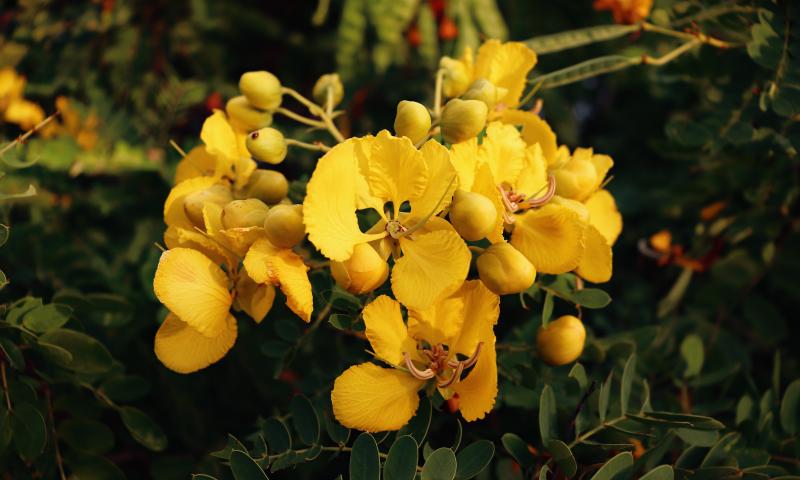 />
/>
The plant kingdom is replete with numerous species, each carrying its unique set of characteristics, benefits, and historical significance. Among them, Avaram, scientifically known as Cassia auriculata, is a noteworthy specimen. This article delves deep into the multifaceted aspects of Avaram, encompassing its botanical traits, chemical composition, historical significance, and general health benefits.
Botanical Characteristics
Cassia auriculata belongs to the Fabaceae family, a family rich in flowering plants primarily recognized for their pod-bearing fruit. Avaram is a small, shrub-like plant, usually growing to a height of 1-2 meters. The leaves are compound, with oblong leaflets that are smooth on the surface. Its bright yellow flowers, arranged in dense racemes, are one of its most defining features. The plant also bears seed pods which are curved, smooth, and green to brown in color.
Chemical Composition
The unique health benefits of Avaram can be attributed to its rich chemical composition. It contains:
Flavonoids: Known for their antioxidant properties.
Tannins: Polyphenolic compounds known for their ability to precipitate proteins and have potential health benefits.
Saponins: Naturally-occurring compounds that possess foaming characteristics.
Glycosides: Compounds that can be broken down to give a sugar and another non-sugar component.
Phenols: Organic compounds recognized for their antioxidant capacities.
This rich chemical mix imbues Avaram with a spectrum of health-promoting properties.
Historical Facts
Avaram has been a cornerstone in traditional medicine systems, notably Ayurveda and Siddha, for several centuries. Historically, its flowers, leaves, seeds, and bark have been used for various therapeutic purposes. Given its easy availability in parts of Asia, particularly India and Sri Lanka, it became an integral part of daily life for many, either as a component of a health tonic or as an ingredient in skin and hair care routines.
Taste
Avaram has an astringent and slightly bitter taste. This unique taste profile is due to the presence of tannins and other phytochemicals. Its taste is often likened to that of certain teas, and as such, it is sometimes consumed as a herbal tea in various cultures.
General Health Benefits
Without directly addressing specific illnesses or diseases, it's worth noting that the consumption and use of Avaram can offer a plethora of general health benefits:
Antioxidant Properties: The flavonoids and phenols present in Avaram make it a potent antioxidant, helping to combat free radicals in the body.
Digestive Health: Its astringent properties can aid in digestion and help maintain the health of the digestive system.
Skin and Hair Care: Traditionally, Avaram has been used in beauty regimens, with its extracts and pastes being applied topically to enhance skin and hair health.
Detoxifying Agent: Consumed as a herbal tea, Avaram can act as a detoxifying agent, helping to cleanse the body.
Indications for Use
Avaram can be consumed in various forms - as a herbal tea, as a component in health tonics, or even as a topical application for skin and hair. It's always recommended to consult with a healthcare professional or herbalist before integrating Avaram or any herbal remedy into one's routine, to ensure that it's suitable for one's specific needs and conditions.
In conclusion, Avaram (Cassia auriculata) stands as a testament to nature's ability to provide us with multifaceted plants that offer a myriad of benefits. Its rich history and potent chemical composition make it an invaluable asset in both traditional and modern contexts. Whether you're looking to explore its health benefits or simply appreciate the wonders of the plant world, Avaram surely deserves a spot on the list.
